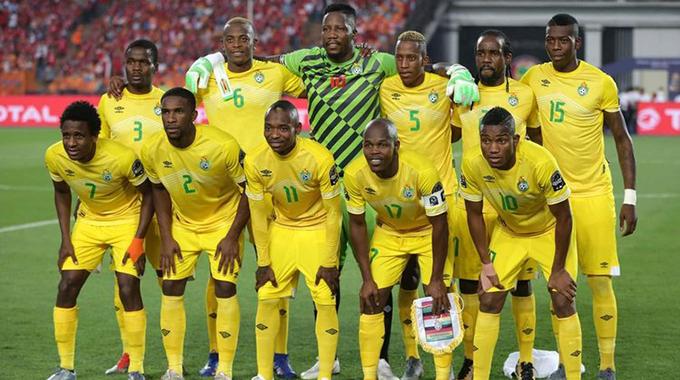Social media, disability exclusion

Lovemore Rambiyawo Correspondent
Incredible, but true! Despite a multitude of challenges people with disabilities (PWDs) face in accessing social media and the social trappings associated with it, findings by the United Nations Convention on the Rights of Persons with Disabilities (UNCRPD) Accessibility Report 2012, following a survey in 52 countries, revealed that social media has the greatest impact in promoting the inclusion of people with disabilities (PWDs) in social, economic, political and cultural processes.
This inclusion also encompasses an impressive array of developmental areas including healthcare, primary education, secondary education, tertiary, professional and lifelong education, employment and government services based on the survey data.
This is despite that physically-impaired users usually have difficulties in using input devices; visually- impaired users usually have difficulties in seeing display devices; hearing-impaired users have difficulties in hearing audio information and, people with learning/cognitive disability usually have problems in understanding system operations.
This contribution is closely followed by mobile phones, which, despite being one of the newer technologies from the ICT assessed, constitute the second-most valued ICT with regards to its contribution for PWDs. In particular, the use of mobile phones is instrumental in allowing the independent living of PWDs.
The exponential rise of social media resonates solidly with an observation made by a prolific writer and arguably the world’s best known observer and analyst of global trends , John Naisbitt, who made this poignant observation in 1982: “The new source of power is not money in the hands of a few, but information in the hands of many.”
Naisbitt was well ahead of his time and with the advent of social media and its evident global proliferation, his analysis has been vindicated — no other communication platform allows the ordinary individual to generate and disseminate, at times almost instantaneously, one’s ideas, thoughts viewpoints and information to a wide and diversified audience as social media.
No other communication platform has the ability to put information in the hands of many as social media. Person-to-person, country-to-country, continent-to-continent and global communication has been enhanced exponentially, scaling new heights in economic, social, political and cultural cooperation and development.
For the over one billion PWDs globally (15 percent of every population), and critically, for the 2,4 million PWDs in Zimbabwe, who suffer from a documented lack of access to fundamental rights and freedoms that other people in society take for granted, social media holds unbridled potential for ensuring disability inclusion in all spheres of social, economic, political and cultural life.
The UNCRPD, bedrock of human rights for PWDs, equalisation of opportunities for PWDs and removal of the multifaceted barriers that legitimate disability discrimination calls, in Article 8 for all socially-conscious organs of the society to raise awareness throughout society, including at the family level, regarding persons with disabilities, and to foster respect for the rights and dignity of PWDs; combat stereotypes, prejudices and harmful practices relating to PWDs, including those based on sex and age, in all areas of life; nurture receptiveness to the rights of PWDs; promote positive perceptions and greater social awareness towards PWDs and foster awareness-training programmes regarding persons with disabilities and the rights of PWDs.
The exponential rise of social media as the premier mode of communication is evidenced by rapid growth of social media, shift toward using social media on mobile devices, emergence of new accessibility options, increasing reliance on social media to communicate and achieve everyday tasks and international shifts towards seeing social media as a democratic tool with strong potential for social inclusion.
Social media is evidently not a passing fad and harnessing the full potential of this invaluable media would result in immense economic, social, and political benefits for PWDs.
The assessment also revealed that, more than any other ICT in use today, mobile devices and services have by far the greatest impact on independent living for PWDs. At the basic level, feature phones provide a means of on-demand communication for the user through both SMS and voice calls.
This in itself can enable independent living by ensuring that emergency services, family members, personal aides, assistive and everyday services are just a call or text away.
Basic mobile phones, even in the Global South, have proved invaluable in providing a means of on-demand communication for users with disabilities through both SMS and voice calls. They have evidently had the greatest impact on independent living for PWDs.
At a more sophisticated level, smartphones address the unique sensory, physical and cognitive needs of customers with disabilities.
A variety of smartphones are rated for hearing aid compatibility. Customers can enjoy open or closed-captioned multimedia content and use face-to-face video chat applications or dedicated video relay services to communicate via sign language.
They are also able to access content non-visually through screen reading applications, customise alert settings to use a combination of audible, visual and vibration alerts and take advantage of voice-commands, adjustable font sizes, predictive text and a range of other innovative features, accessories and third-party applications.
By providing access to a wide number of computing functions, smartphones also exhibit social media capability and its attendant advantages of promoting the inclusion of PWDs in healthcare, primary education, secondary education, tertiary, professional and lifelong education, employment and government services.
They therefore provide an avenue for PWDs to reconstruct disability imagery through skilful dialogue in disability inclusion content. They are designed for portability and are easily worn or carried by a user, unlike a laptop computer or television set. For PWDs, having a mobile device increases independent living not only because of the wide range of services that can be accessed, but also because this type of device allows access to those services (including emergency services) immediately at the time of need and from anywhere in the network.
An analysis of the characteristics of social media — participation, openness, conversation, community and connectedness — reveals that these are the very principles that social inclusion is built on.
Econet has been able to build national awareness on a number of social issues through an SMS quiz competition, leveraging successfully on the principles of participation, openness, conversation, community and connectedness. Disability problems are multiple, interrelated and interconnected, requiring integrated and holistic solutions that address this interconnectedness.
This requires that multilateral stakeholders come together to act collaboratively, collectively and inclusively to ensure disability inclusion using the expertise at their disposal.
Disability organisations will provide disability-specific services across all the areas of the convention; civil society organisations will mainstream disability into their programmes, policies, activities, plans and strategies; social media service providers will ensure awareness through an appropriate disability SMS quiz competition and society will integrate PWDs into their public and political activities.
When stakeholders collaborate this way, they will be able to approximate the v-formation adopted by wild geese when migrating from cold to warmer climates, which is the epitome of teamwork. They reach their destination faster as they will be uplifted by the morale and encouragement just like wild geese flying in the thrust of others and there is no drag or resistance; just like wild geese, which honk to encourage each other, the team also constantly encourages each other.
Also just as wild geese rotate leadership in flying point when one becomes tired, sector-specific competences among the multilateral stakeholders will allow each stakeholder to lead as need arises.
ust like wild geese that will help out each other and remain with a faltering goose until it is able to rejoin the formation, the inclusion team will assist each other to achieve inclusion goals.
When social media comes into contact with other inclusive forces in society, its potential as a mega-trend that can transform the PWDs in all spheres becomes heightened considerably and it becomes plausible to conceive it as a panacea for disability exclusion.
Lovemore Rambiyawo is Acting Executive Director of National Association of Societies for the Care of the Handicapped. NASCOH is an umbrella body to 70 disability organisations in Zimbabwe. The writer can be reached at: [email protected].










Comments